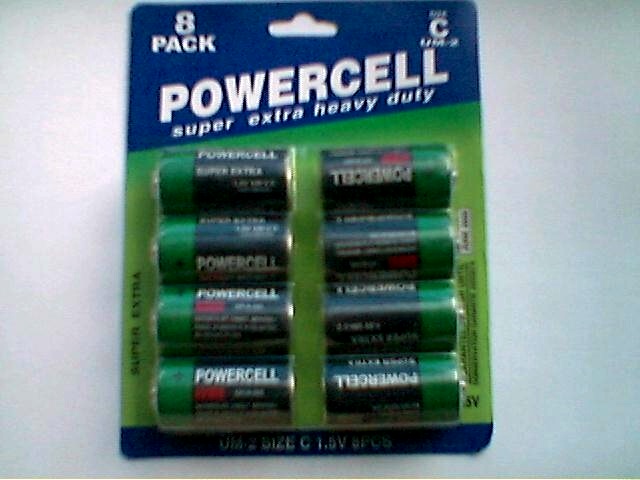

- #4 C BATTERIES HOW TO#
- #4 C BATTERIES SERIAL#
- #4 C BATTERIES DRIVERS#
- #4 C BATTERIES PORTABLE#
- #4 C BATTERIES SERIES#
#4 C BATTERIES DRIVERS#
"Will Lithium-Air Battery Rescue Electric Car Drivers from 'Range Anxiety?'" The New York Times. "Better Batteries Will Save the World." Slate.
#4 C BATTERIES HOW TO#
"Learn How to Maximize Battery Performance." USA Today. "The Dangerous Book for Boys." New York: HarperCollins Publishers, Inc., 2007. "Information on Environmentally Friendly Rechargeable Batteries." 2011. "Riddle of 'Baghdad's Batteries.'" BBC News. "Volta and the 'Pile.'" Electrochemistry Encyclopedia. "Electricity and Magnetism: Batteries." Jan. "Interactive Tutorials." National High Magnetic Field Laboratory. "Rechargeable Batteries and Chargers: A Personal Perspective." Sept. "How Do Batteries Store and Discharge Electricity?" Scientific American.

"Museum of Electricity and Magnetism." National High Magnetic Field Laboratory. Brand, Mike, Shannon Neaves, and Emily Smith."Batteries." Intro to Physical Computing, New York University."History of the Battery." National Historic Chemical Landmarks. One can only imagine what the next generation of smaller, more powerful and longer-lasting batteries will bring.įor more information on batteries and related topics, check out the links below.
#4 C BATTERIES PORTABLE#
These developments are clearly reflected in our fast-paced, portable world, which is more dependent than ever on the portable power source that batteries provide.
#4 C BATTERIES SERIES#
The four batteries arranged in a series will produce 6 volts at 500 milliamp-hours.īattery technology has advanced dramatically since the days of the Voltaic pile. The four batteries in parallel arrangement will produce 1.5 volts at 2,000 milliamp-hours. Imagine the batteries shown in the diagram are rated at 1.5 volts and 500 milliamp-hours. Most AAA, AA, C and D batteries are around 1.5 volts. In a battery, voltage determines how strongly electrons are pushed through a circuit, much like pressure determines how strongly water is pushed through a hose. Voltage is a measure of energy per unit charge and is measured in volts. The four batteries in series will together produce the current of one cell, but the voltage they supply will be four times that of a single cell.
#4 C BATTERIES SERIAL#
The lower diagram depicts a serial arrangement. Generally speaking, batteries with higher amp-hour ratings have greater capacities. A 500 milliamp-hour battery could also produce 5 milliamps for 100 hours, 10 milliamps for 50 hours, or, theoretically, 1,000 milliamps for 30 minutes. You can slice and dice the milliamp-hour rating in lots of different ways. A typical household cell rated at 500 milliamp-hours should be able to supply 500 milliamps of current to the load for one hour.

Batteries are rated in amp-hours, or, in the case of smaller household batteries, milliamp-hours (mAH). Current is the rate at which electric charge passes through a circuit, and is measured in amperes. The four batteries in parallel will together produce the voltage of one cell, but the current they supply will be four times that of a single cell. The upper diagram shows a parallel arrangement. Designed for high drain applications such as emergency lighting, cordless electric screwdrivers, power tools, toys, and other devices that require 20Amp of high current drain. The diagram shows these two arrangements. High capacity replacement 2000mAh 4/5 sub c NiCd battery, an alternative NiCd sub c battery with up to 600 cycles. You normally group them together in a serial arrangement to increase the voltage or in a parallel arrangement to increase current. The C battery is called "14" in current ANSI standards of battery nomenclature, and in IEC standards is designated "R14".In many devices that use batteries - such as portable radios and flashlights - you don't use just one cell at a time. The AA, AAA, and N sizes have been in common use since the 1950s. Duracell is the worlds leading manufacturer of high performance alkaline batteries, specialty cells and rechargeables. Like the D battery, the C battery size has been standardized since the 1920s. Compared to the AAA and AA batteries, C-batteries' storage capacities are significantly higher. Zinc-carbon C batteries usually hold up to 3800 mAh. Alkaline C batteries have a storage capacity up to 8000 mAh while rechargeable NiMH C batteries can hold up to 6000 mAh. The voltage and capacity of a C-size battery depends on the battery chemistry and discharge conditions. Properties D, C, AA, AAA, AAAA & 9-volt batteriesĪ C battery measures 50 mm (1.97 in) length and 26.2 mm (1.03 in) diameter. In Switzerland as of 2008, C batteries totalled 5.4% of primary battery sales and 3.4% of secondary (rechargeable) battery sales. The C battery (C size battery or R14 battery) is a standard size of dry cell battery typically used in medium-drain applications such as toys, flashlights, and musical instruments.Īs of 2007, C batteries accounted for 4% of alkaline primary battery sales in the United States. For the battery used to power vacuum tubes in early electronic devices, see C battery (vacuum tube).


 0 kommentar(er)
0 kommentar(er)
